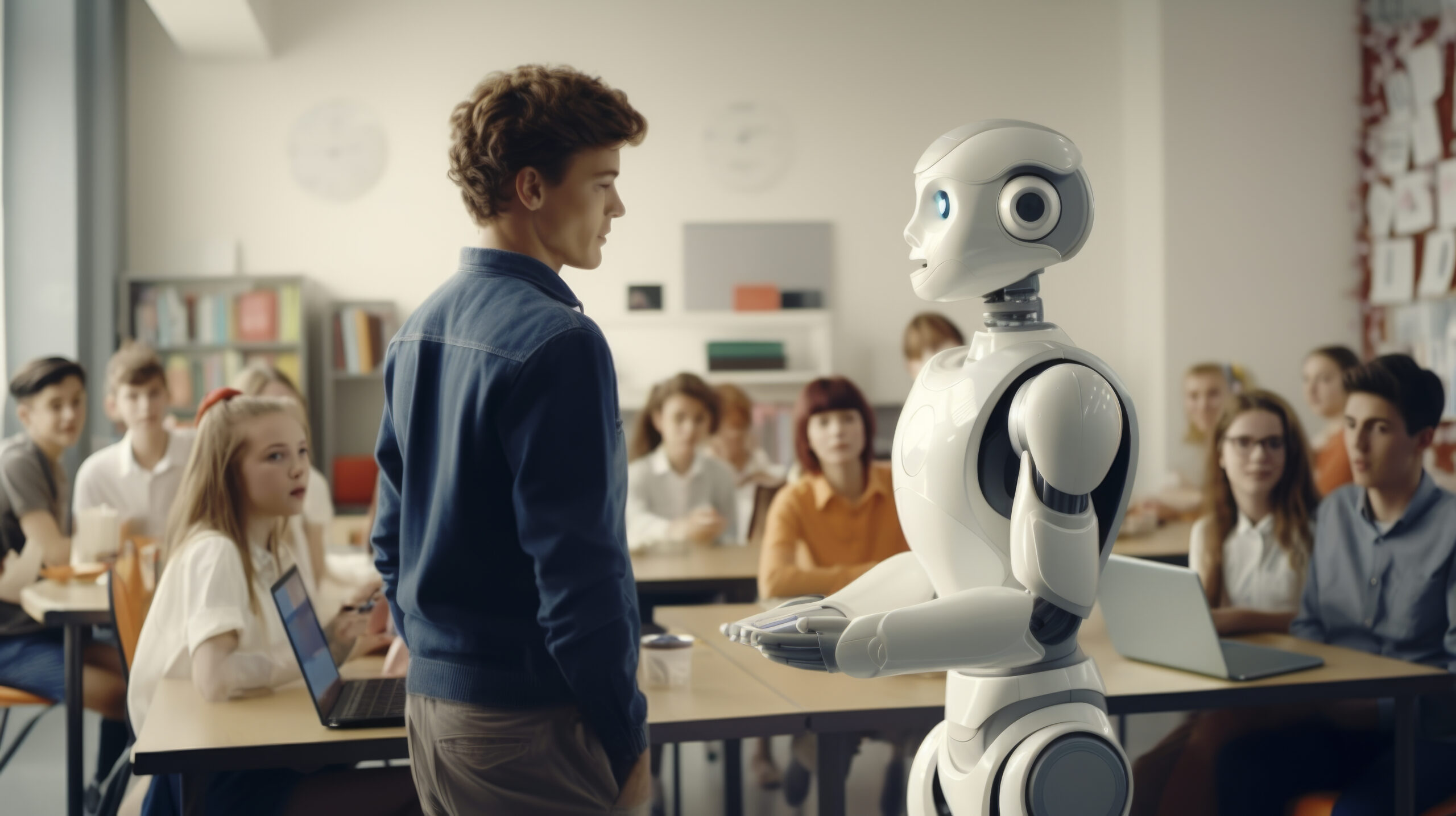
Education across America is undergoing a digital revolution. Local schools embrace technology faster than ever, and AI tools in classrooms lead this transformation. From automating administrative tasks to offering personalized learning experiences, artificial intelligence redefines how students learn and teachers teach. The goal is simple—make learning more engaging, efficient, and accessible.
Traditional resources no longer limit teachers. Instead, AI-driven software and apps now assist with grading, feedback, lesson planning, and student behavioral insights. This integration allows educators to focus on creativity, mentorship, and problem-solving rather than paperwork.
Personalized Learning Experiences
One of the most significant impacts of AI tools in classrooms is the personalization of education. Each student learns differently, and artificial intelligence helps identify those learning patterns. Adaptive platforms like DreamBox, Squirrel AI, and Knewton tailor lessons based on students’ pace, interests, and progress.
For example, when a student struggles with a math concept, AI-powered systems can instantly adjust the content difficulty or suggest different problem-solving techniques. Similarly, strong performers receive more challenging assignments. This personalized learning experience ensures no student is left behind, and every learner reaches their full potential.
Transition words such as “furthermore” and “in addition” help smooth transitions between ideas, making complex topics easier to understand for middle school students and beyond.
AI as a Teacher’s Assistant
Teachers are at the heart of education, but managing large classrooms can be overwhelming. That’s where AI tools in classrooms act as digital assistants. They help with grading tests, organizing schedules, and monitoring attendance. Platforms like Gradescope and Turnitin use AI to check assignments quickly, saving hours of manual work.
Furthermore, AI chatbots and voice assistants like Google’s Socratic or ChatGPT-based tutors provide students with instant academic help outside school hours. These tools answer homework questions, explain concepts, and encourage self-learning, allowing teachers to extend support beyond the classroom.
Enhancing Student Engagement
Maintaining student attention in a digital age can be tricky. However, AI-based gamified learning apps make studying fun. Programs such as Kahoot! and Quizizz transform lessons into interactive games that motivate participation. Learning becomes an enjoyable challenge when students compete or collaborate in real-time quizzes.
In addition, virtual reality (VR) and augmented reality (AR), powered by AI, create immersive lessons. Imagine exploring the solar system or walking through ancient civilizations without leaving the classroom. These experiences increase curiosity and retention rates, giving students memorable learning moments.
Bridging Educational Gaps
Not all students have the same access to educational support. AI tools in classrooms help bridge this gap. Speech-to-text programs assist students with dyslexia, while AI translators help non-native English speakers understand lessons better. These inclusive technologies empower every learner, ensuring equal opportunities regardless of background or ability.
Moreover, predictive analytics help identify at-risk students early. AI systems can analyze attendance, performance, and engagement data to alert educators to intervene before issues escalate. This proactive approach supports better student outcomes and prevents dropouts.
Improving Teacher Training and Professional Growth
Artificial intelligence doesn’t just support students—it also enhances teacher development. AI-powered analytics provide valuable insights into teaching effectiveness, classroom engagement, and lesson performance. Educators can then refine their strategies for better results.
Additionally, online AI coaching platforms simulate real classroom scenarios. Teachers can practice managing different student behaviors or learn how to use data-driven teaching methods effectively. Continuous professional growth helps maintain high educational standards in schools adopting AI.
Data-Driven Decision Making
Education leaders rely on accurate data to make informed decisions. AI-driven dashboards collect and analyze information from multiple sources, including test scores, attendance records, and student feedback. This enables schools to track trends, identify weaknesses, and allocate resources more effectively.
For instance, if AI detects declining engagement in a particular subject, administrators can quickly respond by updating lesson materials or introducing new teaching techniques. This real-time feedback loop ensures schools stay adaptable and focused on student needs.
Ethical Considerations and Data Privacy
While AI tools in classrooms offer tremendous benefits, they also raise significant ethical concerns. Data privacy remains a top issue, as AI systems collect sensitive student information. Schools must follow strict data protection guidelines and ensure transparency with parents and students about how data is used.
Additionally, educators must be trained to prevent over-reliance on AI. Human judgment, empathy, and creativity remain irreplaceable. The balance between technology and human interaction defines the success of AI integration in education.
The Future of AI in Education
The journey of integrating AI tools in classrooms is just beginning. As technology evolves, local schools are expected to adopt even more advanced systems—AI tutors, automated grading assistants, and intelligent curriculum planners.
Future classrooms may use AI-driven facial recognition to assess student focus or mood and adjust teaching methods accordingly. Meanwhile, AI predictive systems could help design personalized career paths based on student performance trends. These innovations promise to make education more innovative, more inclusive, and more efficient than ever before.
However, successful implementation depends on collaboration among teachers, developers, and policymakers. Continuous training, ethical standards, and equitable access will shape how effectively AI supports learning across communities.
Community Involvement and Collaboration
Parents and local communities play a crucial role in this transformation. Many schools host workshops to educate families about the role of AI in learning. These sessions build trust and help parents support their children’s digital learning journey at home.
Local governments and private organizations sponsor AI literacy programs for teachers and students in some regions. Public-private partnerships ensure that AI integration benefits all schools, including underfunded districts. Collaboration strengthens the educational ecosystem, preparing students for a tech-driven future.
Building a Smarter Tomorrow
AI tools in classrooms are not replacing teachers—they’re empowering them. Artificial intelligence streamlines repetitive tasks, personalizes instruction, and creates engaging learning experiences. As local schools continue adopting AI, education becomes more dynamic, inclusive, and effective.
With proper guidance, training, and ethical standards, the partnership between educators and AI can revolutionize how we learn and teach. The future classroom will blend human creativity with machine intelligence to prepare students for the challenges of tomorrow.